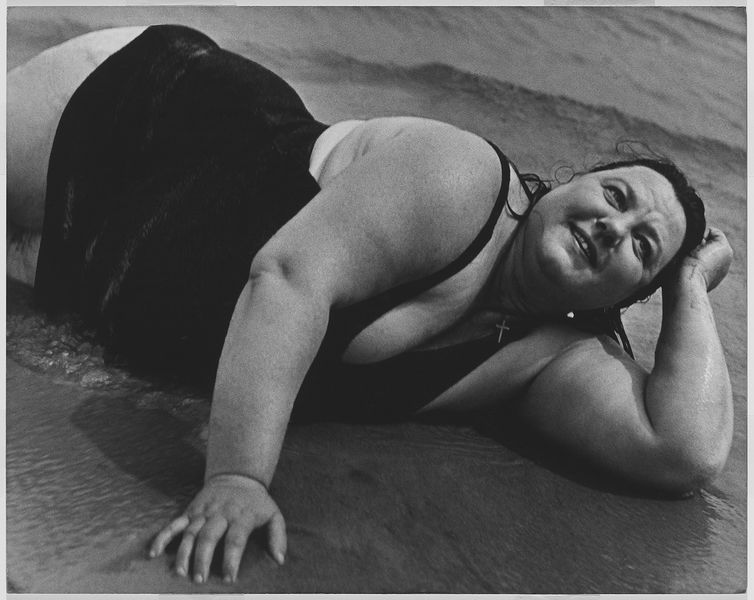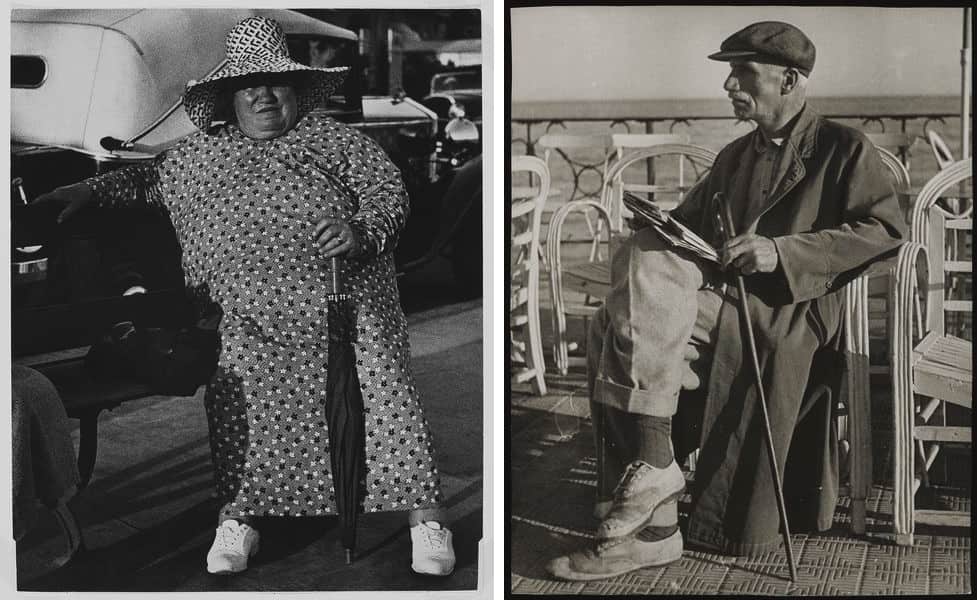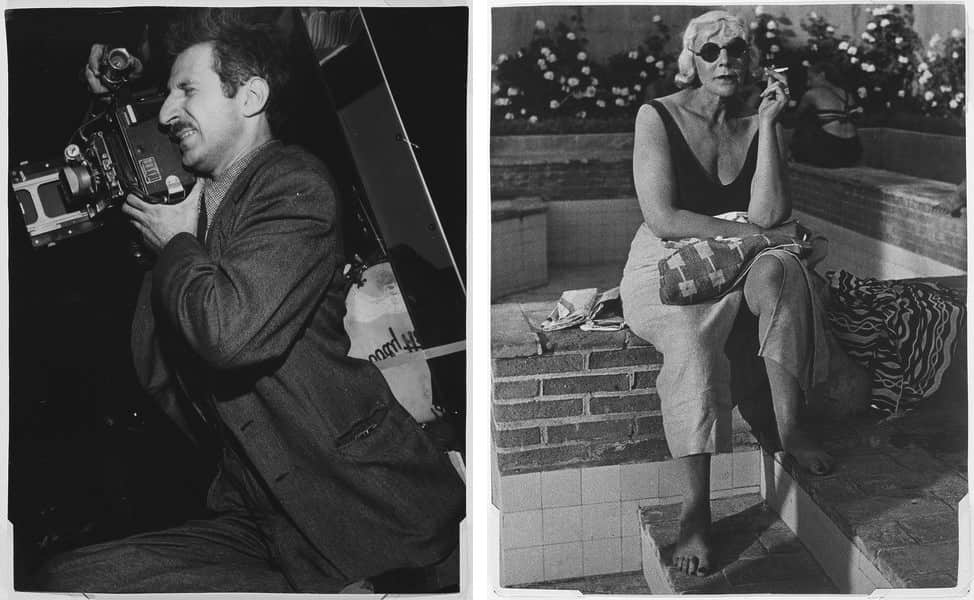The Peculiarity of Average People in the Photographs of Lisette Model
An influential figure in mid-twentieth century photography, Lisette Model redefined documentary photography through her direct, honest portrayal of the human character. Candidly capturing peculiarities of average people, she registered the physical and emotional impact of modern life. Lisette Model's work was included in the 1940 inaugural photography exhibition at the Museum of Modern Art in New York, inspiring other photographers to challenge some of the prevailing conventions of the time.
The work of Model is currently on view in a comprehensive show at the Boca Raton Museum of Art. Titled Lisette Model: Photographs from the Canadian Photography Institute of the National Gallery of Canada, the exhibition brings together a selection of works from the collection of 293 prints from the Canadian Photography Institute of the National Gallery of Canada.
Although Model's career spans almost 50 years, from 1934 to 1983, the works selected for this show reflect only the most significant stages of her career, from her early social documentary photographs taken on the streets of Paris and Nice in the early 1930s through to her later New York work.

The Practice of Lisette Model, A Street Photographer Par Excellence
Initially trained as a musician, Lisette Model became immersed in photography in the early 1930s. She discovered the medium upon her moving from Vienna to Paris through her sister Olga and her friend Rogi André, André Kertész's wife, immediately joining his circle of artists.
After emigrating to New York City in 1938 with her husband Evsei Konstantinovich, the Jewish Russian Constructivist, her love affair with the city was immediate.
When we put our feet on Riverside Drive, we fell in love in a split second.. the beauty of the highways, the poetry of the skyscrapers.
In New York, she surrounded herself with important figures in the photographic community, including Ralph Steiner, Edward Steichen, Ansel Adams, Berenice Abbott, Paul Strand, and Beaumont Newhall. Among them was Alexey Brodovitch, the Art Director, who hired her to work for Harper's Bazaar, which lent her photographs visibility.
After being included in the survey Sixty Photographs: A Survey of Camera Aesthetics at the Museum of Modern Art, her first solo exhibition happened the following year.

The Innovative Camera Work
Admired for her unblinking social realism, the Austrian-born American photographer chronicled high society Manhattan, and everyday life. She was interested in depicting all aspects of modern society — the emotion, frustration, tension, anxiety and frantic tempo that shaped urban existence in between the wars. Shooting dynamic, edgy, low angle, up close shots, she significantly innovated the field of photography of the time. Edgy, interesting, full of anxiety and tension, her photographs hit you in the stomach, as described in her own words.
Observing her subjects without judging them, she used the camera as a tool to explore the world around her, but also the inner-world of herself. Model’s penchant for an aggressive approach to picture taking rendered the subjects that exaggeratedly fill her picture planes into a myriad of iconic characters.
When I was painting in Paris, we drew from the models. And you cannot imagine how fantastically boring it can be to look hour after hour at a beautiful body. But an ugly body can be fascinating.

Exhibition Highlights
Often on the verge of the satirical, Lisette Model's bold and lively images are a testament to her exciting encounters with a variety of people, as well as her experiences of the street life in Paris, Nice, and New York. As a teacher of the medium at the New School for Social Research, she shaped the direction of the postwar photography.
Advocating a subjective interpretive approach to photography, she always taught her students to shoot from their gut. Her compelling practice had a profound impact on generations of photographers, most notably the legendary twentieth-century photographers Diane Arbus.
The exhibition at Boca Raton Museum of Art will bring together 71 photographs from the collection of 293 prints from the Canadian Photography Institute of the National Gallery of Canada. Grouped thematically, the show displays series such as Model’s early street photography in Paris, the bolder and more satirical portraits taken along the Promenade des Anglais, and her iconic images of Coney Island bathers, patrons of Sammy’s Bar, and the Running Legs series, where she employed a radical viewpoint which heightens the crowded feeling of a city sidewalk packed with pedestrians in motion.

Lisette Model Photography at Boca Raton Museum of Art
The exhibition Lisette Model: Photographs from the Canadian Photography Institute of the National Gallery of Canada is on view at the Boca Raton Museum of Art in Boca Raton, Florida until October 21st, 2018. It will provide an insight into the practice of this extraordinary photographer which exemplifies the European photographic tradition and its influence on American modern photography.
The show is organized by the Boca Raton Museum of Art in partnership with the Canadian Photography Institute of the National Gallery of Canada. Founding Partner of the Canadian Photography Institute is Scotiabank.
Editors’ Tip: Lisette Model
Lisette Model is an unsurpassed introduction to one of the twentieth century's most significant photographers - a woman whose searing images and eloquent teachings deeply influenced her students Diane Arbus, Larry Fink and many others.. This timeless volume contains more than 50 of Model's greatest images, from the rich idlers on the Promenade des Anglais in the South of France to the sad, funny and often eccentric inhabitants of New York's most subterranean haunts. As Berenice Abbott said in her preface, "One of the first reactions when looking at Model's pictures is that they make you feel good. You recognize them as real because real people express a bit of the universal humanity in all of us."
Featured image: Left: Lisette Model - Café Metropole, New York, 1946, Gelatin silver print. Gift of the Estate of Lisette Model, 1990, by direction of Joseph G. Blum, New York, through the American Friends of Canada / Right: Lisette Model - Promenade des Angalais, Nice. All images courtesy of Boca Raton Museum of Art.
Can We Help?
Have a question or a technical issue? Want to learn more about our services to art dealers? Let us know and you'll hear from us within the next 24 hours.

